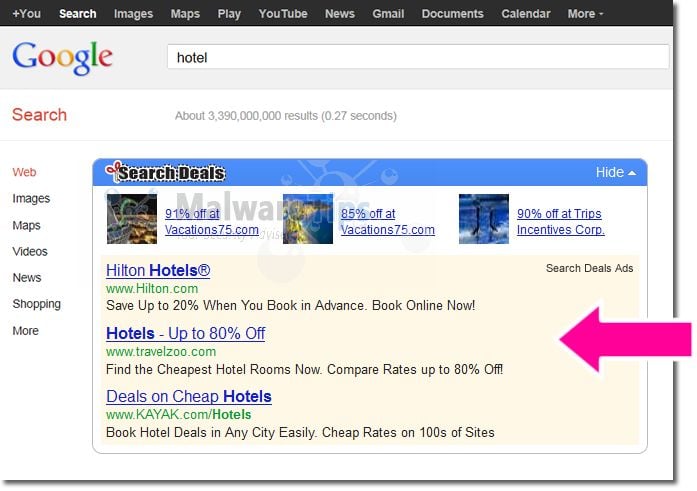Deals popup removal
If you are using Office Skype for Business , you can't delete it from your computer without also uninstalling the rest of the Office suite. This because it's integrated with the other Office apps. The following instructions are for customers who have standalone versions of Skype for Business. If you don't see Skype for Business listed, then you're using a version that's integrated with other Office apps. The only way to uninstall it is to remove all of Office from your computer.
If the above instructions don't work for you, then another option is to disable it in your registry. For instructions, see this post in the Skype community: Completely Uninstall Skype for Business.
- geddes farms coupon code.
- Hot Deals Popup - How To Remove.
- Adware - What Is It & How To Remove It | Malwarebytes.
- cheap pizza deals mackay.
You can uninstall Skype for Business on Mac so you don't see it on your Dock in a few easy steps. Click Uninstall a program or Programs and Features.
- How can I stop pop-up ads in Windows? | Technology | The Guardian.
- Manual removal instructions of Hot Deals popup.
- Thank you for your feedback!.
- canada online coupon sites!
- cutter coupon code.
- legoland coupons 2019 california.
- Welcome to HP Customer Support.
The uninstallation will be launched. Click Next to finish the uninstallation.
Ask the Community
Your browser window will be closed. Click Add or remove programs. Right-click in the lower-left corner of your screen, and then click Control Panel. Close the Internet Explorer web browser. Click the Start Button in the bottom left corner of the screen. Those behind the adware are not doing anything illegal.
At least technically, that is. For the most part, adware for Macs rides inside a Trojan , malware that takes its name from the Trojan horse of Greek mythology.
Uninstall Skype for Business
The Trojan portrays itself as something you want. Maybe a player, or some kind of plug-in.
Click Next to finish the uninstallation. Then click on tools. It used to be that Mac users had no adware fears. Follow the following removal process to remove GreatDeals ads from your computer. Hot Deals popup facts. They usually offer getting some discounts for purchasing various products on Internet stores. After that, governing authorities started to issue large fines for these offenses, which drove the biggest adware players to pick up their code and leave.
It might even be skulking around inside a legitimate software download from a disreputable site. Either way, it promises you one thing, but delivers adware in a bait-and-switch.
- Uninstall Skype for Business - Office Support?
- workboots coupon code;
- Was this information helpful?.
- saks coupon code november 2019;
As far as the signs of a Mac adware infection go, they mirror the symptoms you see on Windows systems. Something changes your homepage without so much as a how do you do. It might even substitute a new search engine for your regular one.

So in the end, Macs, while less vulnerable than Windows computers, can still have a security problem with adware. More on what to do about it below. No big surprise, since thousands of Android apps now contain the gift that keeps on shoving icons and ads at you without warning. There are two methods through which mobiles come down with adware: Despite its being an annoying pest, take some small comfort in the fact that such adware is generally not blatantly malicious, threatening your device like malware might.
Many of the free apps you download to your phone often include third-party ad content, providing software developers an alternative revenue stream so you can have their offering for free.
Still, adware is not generally benevolent; so faced with a free app that stuffs your device with adware, and a paid program that plays nicely, consider the best choice for you. And it follows the individual user across any path of opportunity—from Windows PCs and Macs, to mobile phones, and virtually all browsers. If you suspect adware has compromised your Mac or Windows PC, there are a few steps you can take to remedy the infection. First, back up your files, regularly.
You can try to remove the adware through the pertinent utility on your operating system i. If that is the case, then download a legitimate cybersecurity program such as Malwarebytes for Windows or Malwarebytes for Mac. Both are free to try, and are designed to search and destroy adware, PUPs, and any new forms of malware lurking on the scene.
Use caution and practice safe computing.
All about adware
That means thinking twice before immediately downloading and installing any new software—especially freeware. Read the terms and conditions like a lawyer before agreeing to them, and quit out of the download process if anything smells like a permission to load adware. Avoid torrent sites, illegal downloads, and never ever open an app from an unknown source, even if it comes to you under the guise of a known email contact.
Finally, even before all the above precautions, download a reputable cybersecurity program for your PC or mobile phone.
Perform scans frequently, and keep your updates, well, up to date.